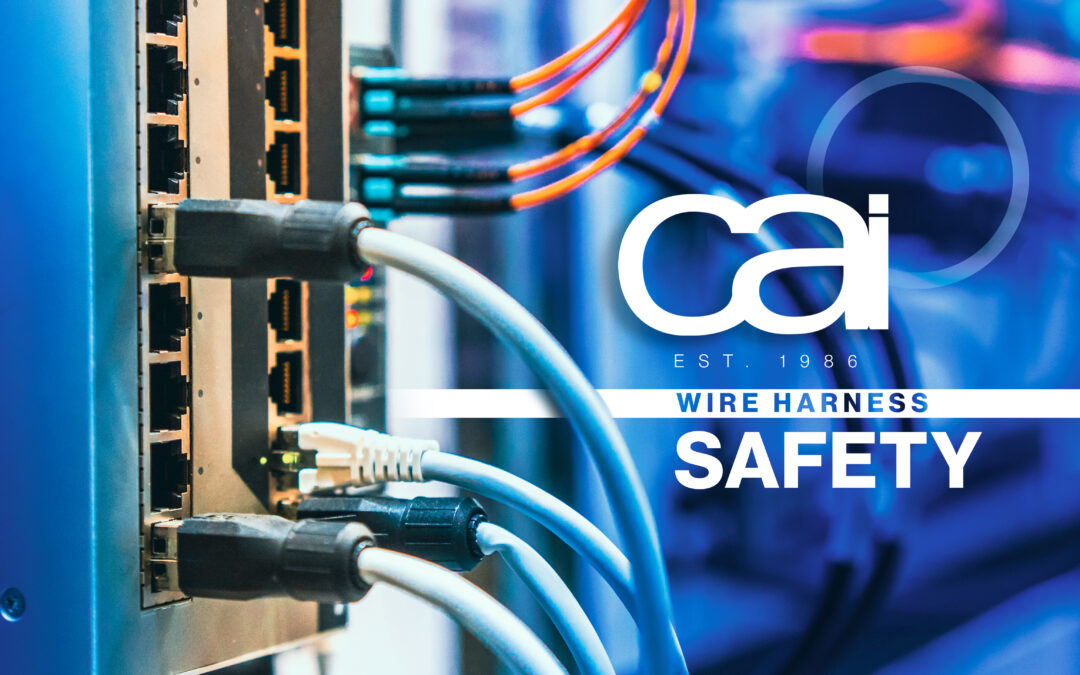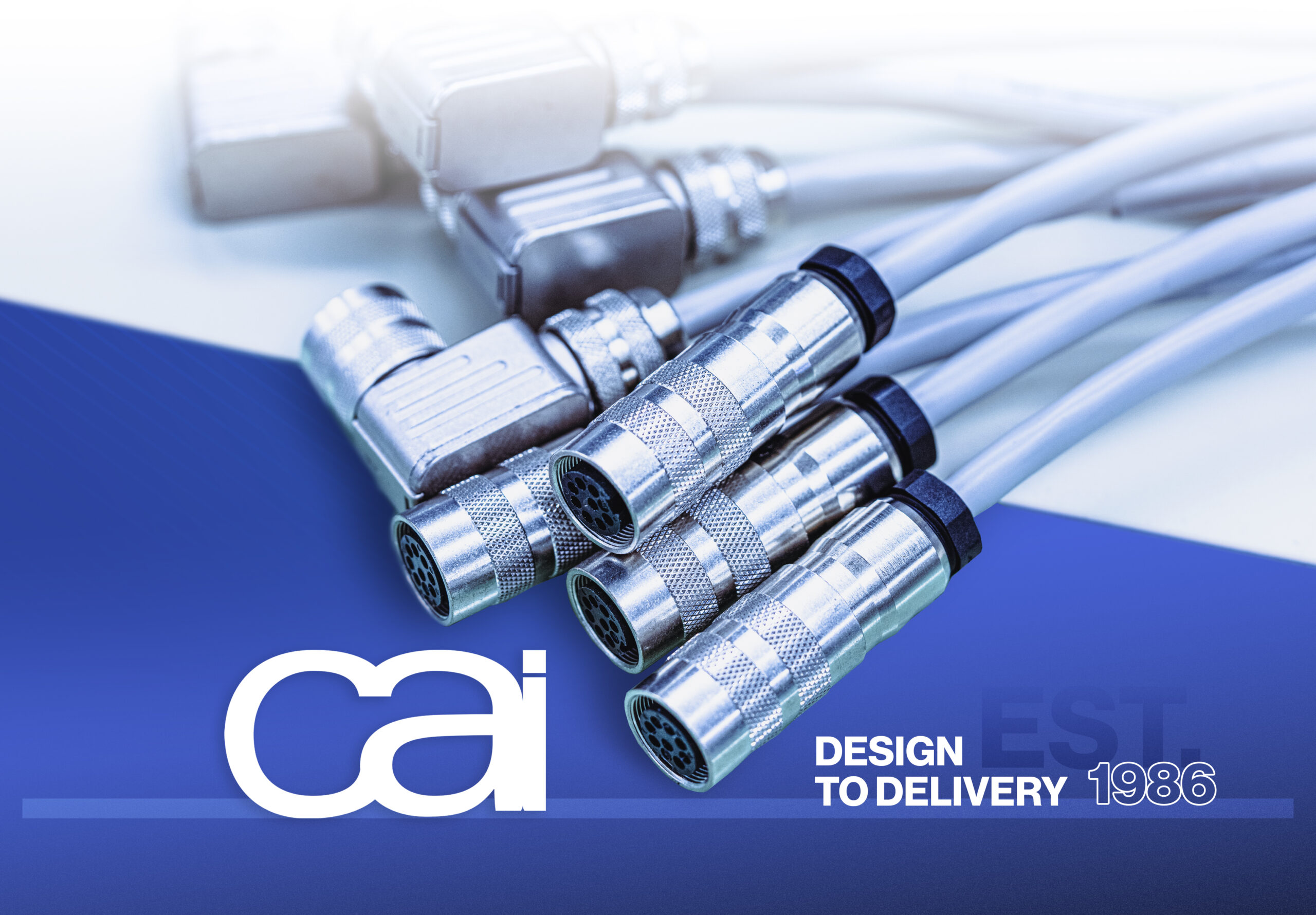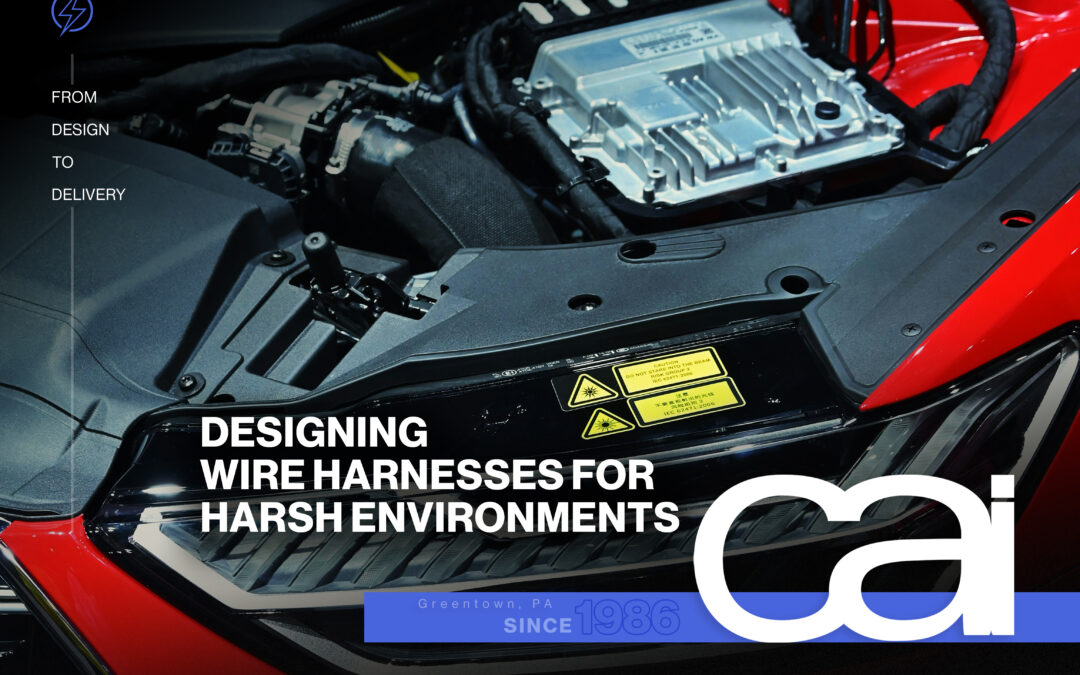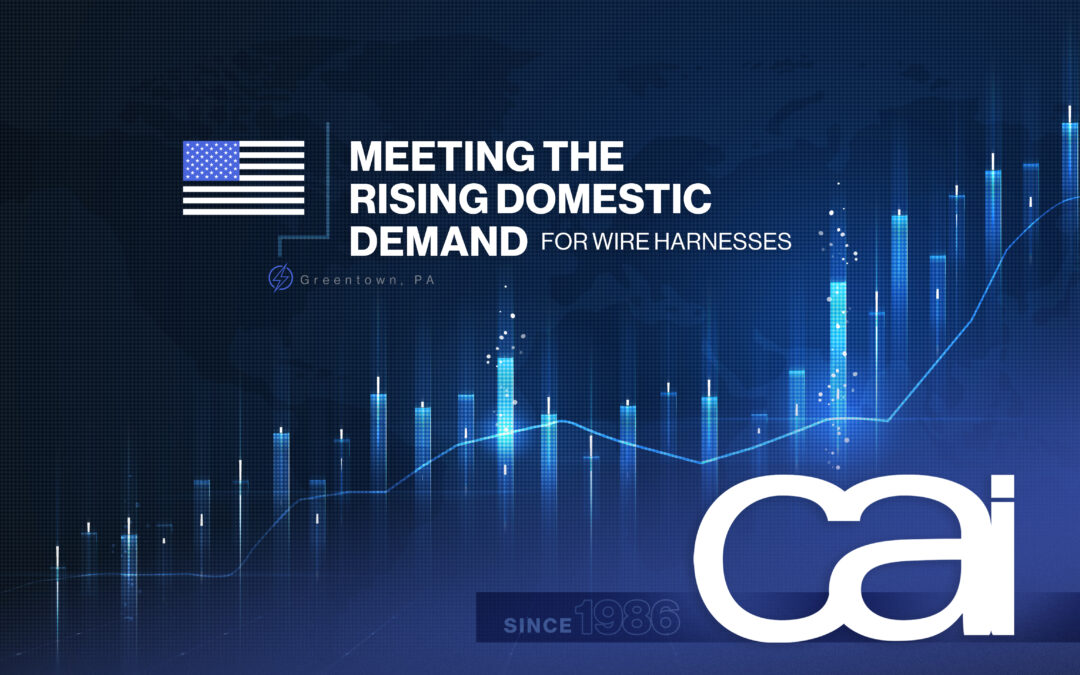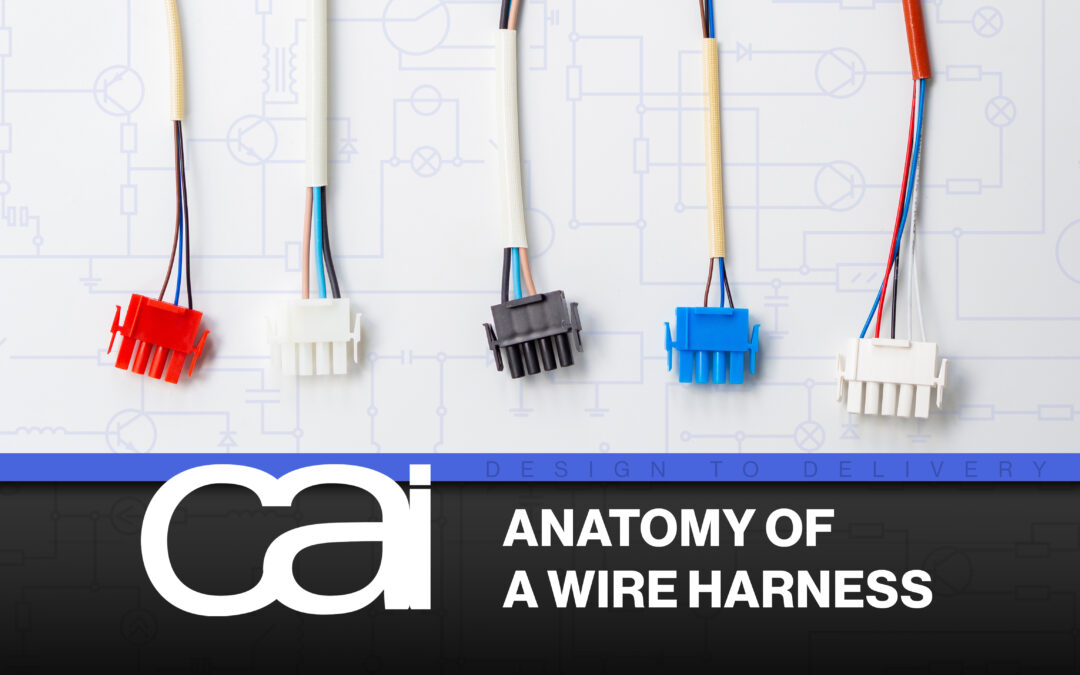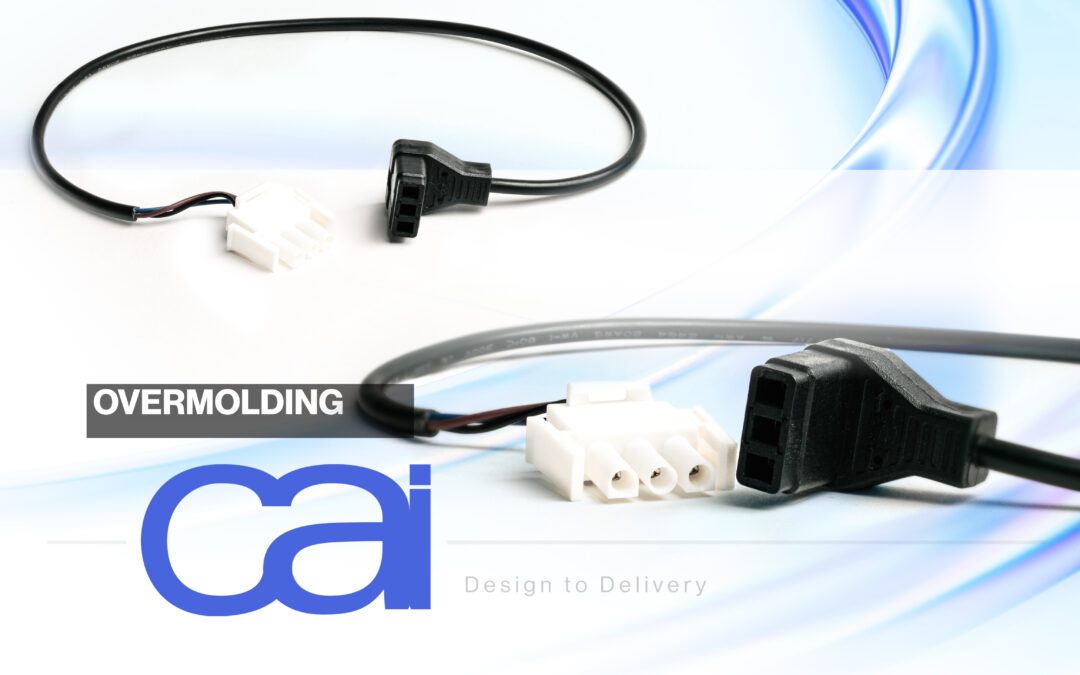CAI Overmolds Off-the-Shelf Solutions for Optimal Cable Strain Relief
Traversing long distances and used in a variety of demanding environments to transport power and data to and from electrical devices, electrical cables and cable assemblies must be built to withstand many types of punishment, including frequent bending and twisting. Of the many invaluable processes used to enhance the overall quality of cables, strain relief is one for addressing the frequent strain placed upon them.
Understanding Cable Strain Relief
The primary aim of cable strain relief is to transition from the flexible cable to rigid connectors and connection points in a way that prevents outside mechanical forces from adversely affecting vulnerable electrical terminations within the connector or device. This is especially important for applications and industries where recurrent movement of the cables occurs, such as in automotive wiring, industrial machinery, and consumer electronics.
Where a cable is terminated is typically the most vulnerable point in regards to flex life, tensile strength, and the need for strain relief. From electronic devices to power cords, cable strain relief is a crucial element in cable management and an essential method for maintaining electrical and mechanical integrity, ensuring reliable performance, and making cable assemblies last longer.
With over 35 years of electrical cable assembly and wire harness experience, the experts at CAI know the best processes, materials, and designs to perfectly fit your unique project and production volume. Connect with us today for all your cable and wire product needs!
The Importance of Strain-Relief
Cable Fracture Prevention
The bending and pulling of cables, without proper strain-relief, can cause stress concentrations and fractures to form at critical points, leading to structural failure. Frequent handling and sharp bending angles can exacerbate the situation. As fractures worsen, conductors may be damaged or exposed, leading to anything from poor or intermittent connectivity to complete electrical failure. Distributing the stress evenly along the cable’s length, proper strain relief reduces the risk of fractures.
Greater Cable Lifespan
Minimizing wear and tear, proper strain-relief ensures that cable materials, especially the conductors, avoid excessive stress. Additionally, the less fractures and frays a cable suffers, the more resistant it will be to invasive threats such as water and chemicals. Strain relief helps preserve cable integrity over time, resulting in longer cable lifespan.
Enhanced Cable Flexibility
Excessively rigid strain relief can limit movement too much, which is why proper strain relief must strike the right balance between cable protection and cable flexibility. When strain relief is done right, it allows for a good range of motion, not only ensuring that the cable performs effectively and reliably but also allowing it to maintain flexibility longer in the places that matter.
Strain-Relief Design
The design of strain relief focuses on a number of factors, including rib style, body style, slot thickness, slot shape, cable diameter, and inner-flange style. The geometry, interaction of strain relief and jacket material, and intended application are also major considerations when choosing strain relief types and materials to maximize performance.
Overmolding + Off-the-Shelf Solutions = Optimal Strain Relief
There are a number of strain relief techniques available today, such as grommets and bushings which are popular for safeguarding entry and exit points within electrical equipment. However, overmolding is, by far, the most effective and popular process to relieve strain.
Utilizing injection-molding to combine properties of two materials without using adhesives or secondary processes, overmolding encapsulates cables and connectors in an extra protective layer, forming one single, solid piece for a number of benefits — chief among them being greater durability. Thanks to its resilience and versatility, polyvinyl chloride (PVC) is one of the most widely used thermoplastics for cable overmolding. Offering a softer texture and a wider range of colors, thermoplastic polyurethane (TPU) is another popular choice for overmolded cable assemblies.
Cost-Effectiveness
While there are fully custom cable solutions out there, they have a tendency to increase both lead time and overall costs. Combining overmolding with off-the-shelf strain reliefs that are ideal for each client’s specific application and volume needs, CAI offers the perfect blend of quality, timeliness, and cost-effectiveness. Usually applied before the connector is terminated, off-the-shelf strain reliefs come in a variety of sizes to accommodate different cable diameters.
Additional Moisture & Chemical Resistance
Due to the physical and chemical bonding of connectors and jackets, overmolded strain reliefs provide more moisture resistance than off-the-shelf solutions alone. Overmolding is a practical must for cable assemblies used in demanding environments, especially those where water and chemicals can be a factor, such as factory floors, outdoors, or underground. Waterproof cables are essential for guarding against damage to equipment — such as fraying and splits — and safety issues that can lead to electrical shock or fires.
Improved Strength, Durability, & Lifespan
The combination of overmolding and off-the-shelf options results in a stronger, more durable piece, translating into longer lifespans of the cable or cable assembly as well as reduced downtime, resources, and money spent on replacements. Offering enhanced tensile strength and flex life, overmolding is key to getting the most out of your cables.
Greater Appearance, Organization, & Customizability
Creating a more stylish and attractive aesthetic as one seamless piece, customization also offers a countless number of color, multi-color, color coding, embossed, and printed branding options to not only enhance appearance but also make identification and installation easier. From adding logos or brand names to incorporating company colors, custom overmolding lets you truly make the cable assembly your own. The choice to dress a cable assembly so it either stands out or disappears discreetly in its environment is up to each individual and their unique needs.
Ensuring the best performance, safety, and durability, CAI can provide the best overmolded cable assemblies for your intended application and desired volume. Reach out to us today and experience the CAI difference for yourself!
